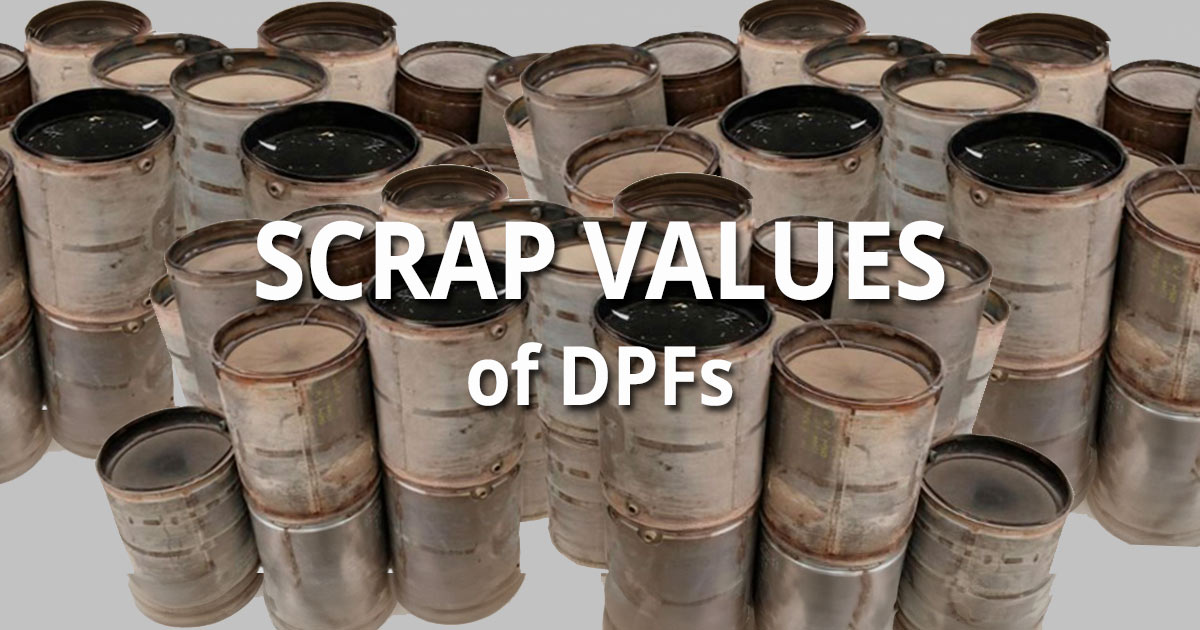For most heavy-duty truck and bus fleet operators, DPF cleaning has become a routine part of regular fleet maintenance. DPFs are unique in that they require periodic service, are prone to failure, and are expensive to replace.
With DPF cleaning comes a set of standard questions about the different procedures, what’s most effective, what’s least expensive, and how to minimize downtime.
This article will attempt to answer these common questions and give you a better understanding of DPF cleaning.
Why is DPF cleaning required?
A DPF physically traps and collects diesel soot and ash particles from diesel engine exhaust. While most of the trapped soot (organic matter) is burned off during periodic filter regeneration, metal oxide “ash” (inorganic matter) particles are not burned off. Ash is the inorganic material from lube oil and wear metals. It comes from the engine and is left behind after thermal filter regeneration. Over time, the unburned ash particles and soot will plug the filter unless the filter is periodically cleaned.
Common benefits of regular DPF cleaning:
- Improve fuel economy
- Prevent DPF failure and replacement expenses
- Improve overall engine performance
- Help maintain emissions compliance
What is “Bake and Blow” DPF Cleaning?
Most heavy-duty DPF cleaning processes use some variation of the “bake and blow” methodology. This process includes the following steps:
- Inspect: Inspect and measure the weight and flow of DPF before and after each step.
- Bake: Bake/cool the DPF for 8-12 hours to reach temperature ramps and ranges. At 100-300 C (212-572 F), coolant, water, oil, and fuel start to evaporate; at 600-650 C (1100-1200 F), soot oxidizes.
- Blow: Reverse the remaining ash material from the filter using compressed air (blow) or water (aqueous) techniques.
- Inspect/Repeat: Repeat the process depending on inline weight/flow measurements.
- Failure/Replacement: Some filters cannot be cleaned and must be replaced. This is often determined before cleaning but sometimes after an initial cleaning cycle. Common reasons are: the DPF core is melted or cracked, excessive soot in the DPF caused by engine issues, poor engine maintenance, operator ignoring DPF warning indicators, failure to clean DPF regularly, etc.
- DPF Disposal: When DPFs fail or can no longer be cleaned, we recommend recycling failed DPFs with a reputable company like Red Fox Resources. Never throw failed DPFs in the garbage because, in some cases, they may contain hazardous materials. Likewise, caution should be used when disposing of accumulated DPF ash from the cleaning process. Depending on your local regulations, DPF ash may be considered hazardous materials (zinc and cadmium) and should be handled accordingly. Learn more about deposing of DPF ash in this article.
What are the Common Cleaning/Reman Models?
Today, most heavy-duty DPF cleaning is handled using one of two models: Centralized Cleaning/Reman or In-Shop Cleaning, as outlined below:
Centralized DPF Cleaning
As opposed to local in-shop cleaning, centralized cleaning is well suited for the large-scale reman/recon model where the cleaned core is not returned to the original owner. This cleaning or remanufacturing model combines thermal (bake) and aqueous (blow/flow) cleaning techniques.
Pros of Centralized
- High volume leads to a dedicated team, refined process, and specialized equipment
- Diagnostics are often more advanced
- Can easily seed failed parts with new parts
Cons of Centralized
- A fast turnaround is not possible due to the centralized location
- The customer does not know the history of the returned part
- A high percentage of returned parts are failed and cannot be cleaned/remanufactured
- Relies on a stream of good-quality cores to be cost-effective
- Not legal in California
Local In-Shop DPF Cleaning
Typically, it is used by fleet maintenance facilities, OEM dealers, and service centers to provide localized DPF cleaning services. Although it still requires specialized cleaning equipment, the local in-shop process can operate at a smaller scale and with fewer dedicated resources. Documentation, including datasheets and photographs, is an integral part of this cleaning process, which often uses the “bake and blow” technique and equipment.
Pros of In-Shop
- A fast turnaround is possible
- Failed parts are quickly identified
- Customers get their cleaned parts returned
- Legal in all U.S. states
Cons of In-Shop
- High-volume cleaning operation is not possible
- The cleaning process and equipment is less advanced compared to the centralized method
- Staff may be less experienced, and the process may be less sophisticated
Although DPF cleaning seems pretty straightforward, many factors can make a difference. As you evaluate options, take a closer look at these elements:
- Core requirements
- Equipment & tooling
- Training
- Process
- Experience
- Cost
Key Takeaway on DPF Cleaning
Some DPF cleaning and remanufacturing companies claim to have more experience, patented processes, and better equipment. Still, it’s best to carefully evaluate your options and select the best partner, given your location and operation. If you have further questions about DPF cleaning or DPF recycling, the team at Red Fox Resources has extensive experience and would be happy to help.
Frequently Asked Questions – DPF Recycling | How DPF Recycling Works | Get a Quote




